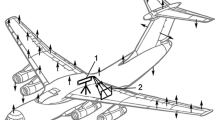Abstract
The use of linear elastic fracture mechanics generally depends upon the availability of suitable analytical or numerical solutions for the relevant crack-tip stress-intensity factor,K. Convenient experimental verification of such solutions is a valuable aid to their correct application and can provide a practical substitute in real design situations of great complexity.
A convenient, new experimental technique for estimating the Mode I stress-intensity factor using holographic interferometry and test pieces cut from thin sheets of commercially available polymethylmethacrylate is described and demonstrated. The test pieces can readily be prepared to model any desired Mode I geometry and boundary conditions. In addition, a prior self-calibration procedure can be employed to enhance both convenience and accuracy. Real-time interference-fringe data from the crack-tip region are easily reduced and plotted to yield a straight line whose slope provides a one-parameter evaluation of the effect of geometry on the stress-intensity factor. This information, together with the crack length and applied stress, completely definesK.
Similar content being viewed by others
References
Irwin, G. R., “Fracture Mechanics,” Structural Mechanics, Pergamon Press, New York, 557–92 (1960).
Paris, P. C. andSih, G., “Stress Analysis of Cracks,”Fracture Toughness Testing and Its Applications, ASTM Special Technical Publication 381, 30–81 (1965).
Irwin, G. R. andKies, J. A., “Critical Energy Rate Analysis of Fracture Strength,”Welding Research Supplement,33,193S-198S (April1954).
Irwin, G. R., “Discussion (of paper by Wells & Post),”Proceedings SESA,16 (1),93–96 (1958).
Maloff, R. H., Leven, M. M., Ringler, T. N. andJohnson, R. L., “Photoelastic Determination of Stress-intensity Factors,”Experimental Mechanics,11 (12),529–539 (1971).
Frocht, M. M., “Photoelasticity,”1, 2,John Wiley & Sons,New York (1948).
Dudderar, T. D. andO’Regan, R., “Measurement of the Strain Field Near a Crack Tip in Polymethylmethacrylate by Holographic Interferometry,”Experimental Mechanics,11 (2),49–56 (1971).
Dudderar, T. D. and O’Regan, R., “Holographic Interferometry in Materials Research and Fracture Mechanics,” Int’l. J. of Nondestructive Testing, in press.
O’Regan, R. andDudderar, T. D., “A New Holographic Interferometer for Stress Analysis,”Experimental Mechanics,11 (6),241–247 (1971).
Nisida, M. andSaito, H., “A New Interferometric Method for Two-dimensional Stress Analysis,”Experimental Mechanics,4 (12),366–376 (1964).
Bowie, O. L., “Analysis of an Infinite Plate Containing Radial Cracks Originating at the Boundary of an Internal Circular Hole,”J. of Mech. and Phys.,35,60–71 (1956).
Author information
Authors and Affiliations
Additional information
was formerly with Bell Laboratories.
Rights and permissions
About this article
Cite this article
Dudderar, T.D., Gorman, H.J. The determination of mode I stress-intensity factors by holographic interferometry. Experimental Mechanics 13, 145–149 (1973). https://doi.org/10.1007/BF02322667
Received:
Revised:
Issue Date:
DOI: https://doi.org/10.1007/BF02322667




